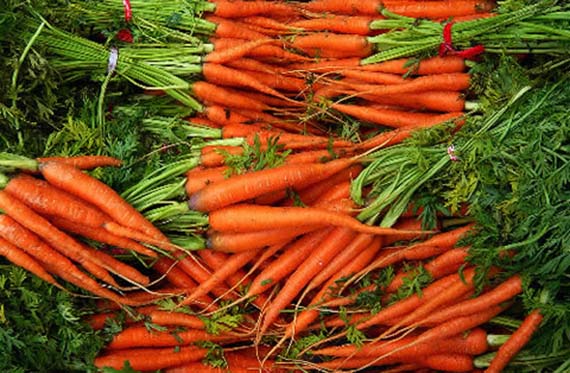
According to september crop calendar, the sowing season will soon end carrots. I wanted to take advantage of mild temperatures, to sow these vegetables, with a long tradition in the Mediterranean diet. Its botanical origin is located in ancient Persia (current Iran) and they were already consumed in classical Greece. The current orange and conical root varieties were introduced by the Arabs to the Iberian Peninsula in the XNUMXth century.
Carrot is grown from seeds, as it does not tolerate transplanting well. We will plant them, about 5 cm from the surface. The seed it will germinate in 10-15 days. You will need a substrate with a volume of 2 l, it must be loose to allow good root development, and depth must prevail when choosing the most suitable container. Once germinated, we will leave one seedling per pot or, if it is on a growing table, a distance of about 8 cm between plants, eliminating the rest of the seedlings.
The carrot likes mild temperatures but can withstand not very strong frosts. It is a long-cycle vegetable: from sowing to harvest, it usually takes a few 90 days, although there are varieties with a shorter cycle, up to 75 days. If they are harvested earlier, their size will be smaller but they will be sweeter. In any case, care must be taken when digging them up so as not to tear off the aerial part.
All the varieties Carrots can be classified according to the shape of the root, the size and the growing cycle. It is important to select varieties with a short cycle, rounded and small in size.
As for the cultivation associations, works well with onions, garlic, lettuce, radishes, tomatoes, and peas. On the contrary, you should avoid associating them with vegetables from the same family (umbelliferous), such as parsley, celery and fennel.
Regarding irrigation, You need to maintain constant moisture of the substrate to prevent the skin from hardening and cracking the root.
It is not too demanding in terms of nutrition. Manure that is too fresh should be avoided, as it can cause root bifurcation.
Their pests The most common are:
- Carrot fly. Although it is not very frequent in the flowerpot, the larvae can form galleries in the root. To prevent this pest, it can be grown in association with onions, which act as a repellent, a function that rosemary and sage also perform.
- Mildew. The association with onion can also prevent this type of fungus, one one of the most common in the urban garden.
More information - September Crop Calendar, Organic seeds, The most common mushrooms in the urban garden